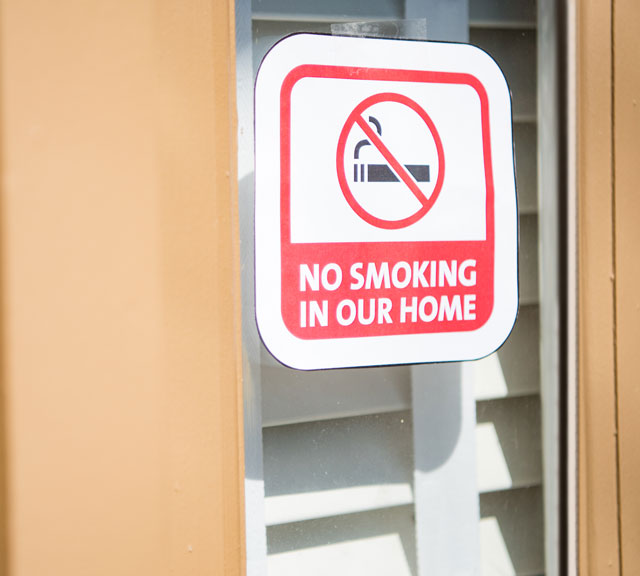When Breathing Isn’t Easy: Acute and Chronic Bronchitis

Answer a few questions and we'll provide you with a list of primary care providers that best fit your needs.
Breathing is fundamental to life, and usually effortless. Each breath delivers fresh oxygen to your bloodstream and helps remove carbon dioxide (a byproduct of breathing) from your body. The air you inhale makes its way to your lungs through your windpipe or trachea, then through a branching network of smaller passageways called bronchi, or bronchial tubes.
But when your bronchial tubes become irritated or inflamed, a condition called bronchitis, breathing becomes more complicated. Bronchitis increases mucus production and tightens muscles that can make breathing difficult and cause coughing, wheezing and chest pain.
Bronchitis comes in two main varieties: acute (short-term) and chronic (ongoing).
The main cause of chronic bronchitis, smoking, can constantly irritate and inflame the bronchial tubes. Air pollution or other environmental factors, common in some work settings, may also pay a role.
Acute Bronchitis
Acute bronchitis, also known as a chest cold, is typically caused by a viral infection, most often the same viruses that cause colds and the flu. Viruses can be spread through the air (if someone carrying the virus coughs in your direction, for instance), and they can be passed through physical contact when an infected person who has not washed well shakes your hand.
Acute bronchitis can also result from a bacterial infection. And your risk of contracting acute bronchitis can increase if you’re exposed to tobacco smoke (even secondhand), dust, fumes and air pollution.
Symptoms and diagnosis: Most of us are familiar with the symptoms of acute bronchitis. It usually lasts up to two weeks and can involve a good deal of coughing and nose-blowing, chills, slight fever, headache, chest soreness, achiness, fatigue, sore throat, watery eyes and wheezing. Your health care provider can usually diagnose acute bronchitis through a physical exam and your description of symptoms. Your doctor may order other tests, such as chest X-rays, blood gas studies, sputum testing, and pulmonary (lung) function tests, to rule out other potential causes (pneumonia, for instance).
Treatment: Acute bronchitis may last one or two weeks. Depending on the cause, your doctor may prescribe antibiotics or, in severe cases, steroids to help reduce the inflammation in your airways. Your health care provider will usually focus on helping you manage your symptoms. Treatments may include:
- Taking cough medicine, pain relievers, and fever reducers such as acetaminophen or ibuprofen.
- Humidifying the air at home
- Avoiding cigarette smoke or stopping smoking
- Drinking plenty of fluids
- Prescription antibiotics
Chronic Bronchitis

Like acute bronchitis, chronic bronchitis is an inflammation of the bronchial tubes. But acute bronchitis is relatively short-lived, while the chronic variety is long-lasting. The main cause of chronic bronchitis, smoking, can constantly irritate and inflame the bronchial tubes. Air pollution or other environmental factors, common in some work settings, may also pay a role.
Sometimes chronic bronchitis can occur in combination with other lung problems, including:
- Asthma
- Pulmonary emphysema
- Scarring of the lungs (pulmonary fibrosis)
- Sinusitis
- Tuberculosis
- Upper respiratory infections
- Symptoms and diagnosis: The effects of chronic bronchitis can vary, but the most common symptoms include a persistent cough (that sometimes brings up mucus), wheezing and chest discomfort. Additional symptoms may include:
- A bluish tint to fingernails, lips and skin due to lowered oxygen levels
- Swollen feet
- Heart failure
- Shortness of breath with activity
For bronchitis to be diagnosed as chronic, you must have a cough and mucus most days for at least three months a year, for two years in a row. In addition to a physical exam, your health care provider will likely order tests to assess your condition and rule out other problems. These tests may include the following:
- Spirometry: to see how well your lungs are working
- Arterial blood gas: to check the levels of oxygen and carbon dioxide in your blood
- Pulse oximetry: another way to measure oxygen in the blood
- Chest x-rays: to view your lungs and other internal tissues
- CT scan: to gather more detailed images of your internal organs and tissues
- Treatment: The treatment of chronic bronchitis will include many of the same symptom-management remedies as those used for acute bronchitis, with the possible addition of:
- Bronchodilators and steroids: to help open your airways and clear up mucus
- Steroids: to help reduce inflammation in the bronchial tubes
- Oxygen therapy: to help you breathe easier and increase your body's oxygen supply
- Pulmonary rehabilitation: to help you live more comfortably and stay active
Practice Good Self Care
If you smoke, one of the best steps you can take to lower your risk of bronchitis — and benefit your overall health — is to quit smoking. Ask your doctor or health care provider to recommend programs and provide tips on how to stop.
Also, avoid other lung irritants, such as secondhand smoke, dust and air pollution.
Finally, practice good hygiene. Wash your hands regularly to lower your risk of contracting a bronchial infection from someone else.
Answer a few questions and we'll provide you with a list of primary care providers that best fit your needs.
Source: National Heart, Lung, and Blood Institute; American Lung Association




